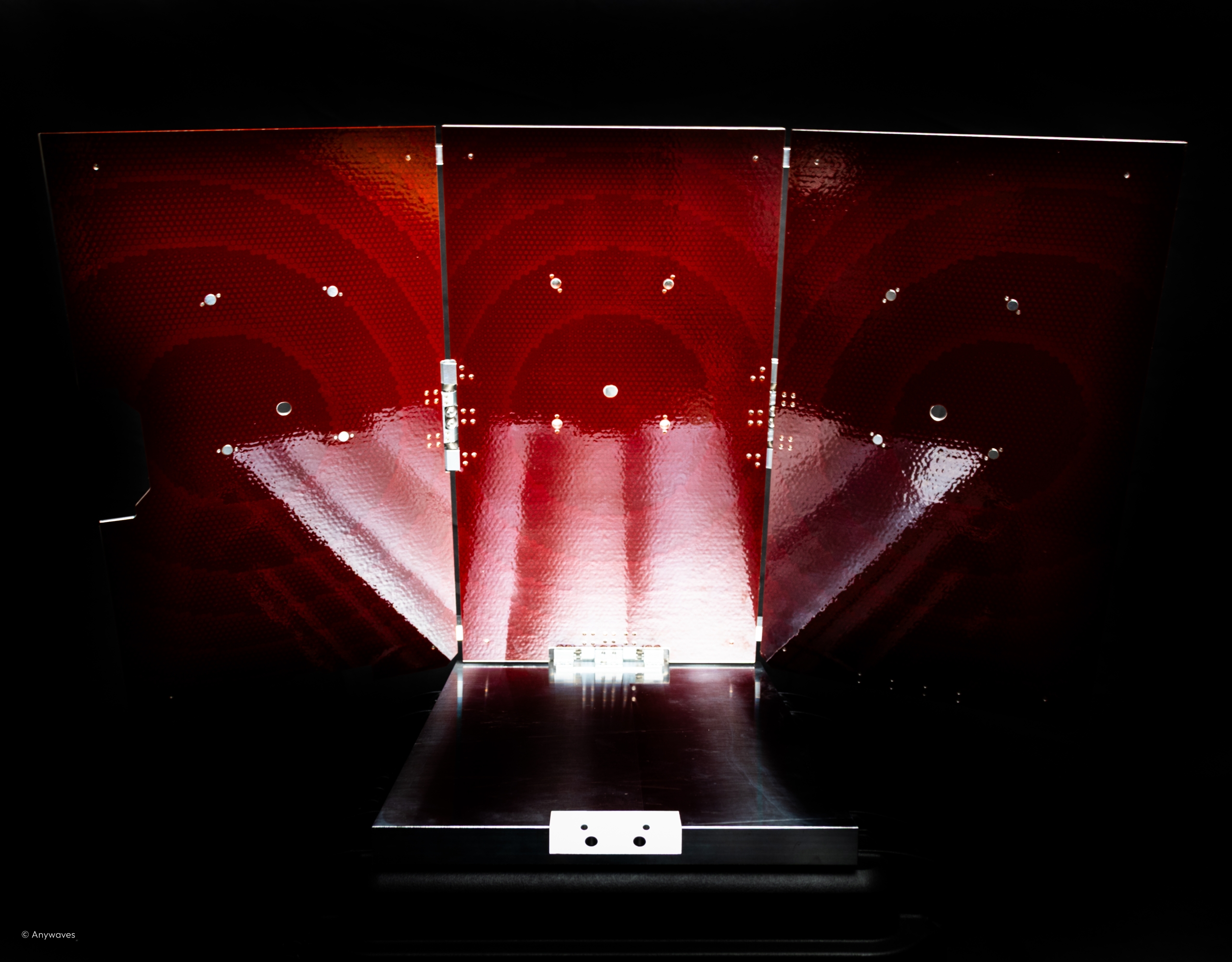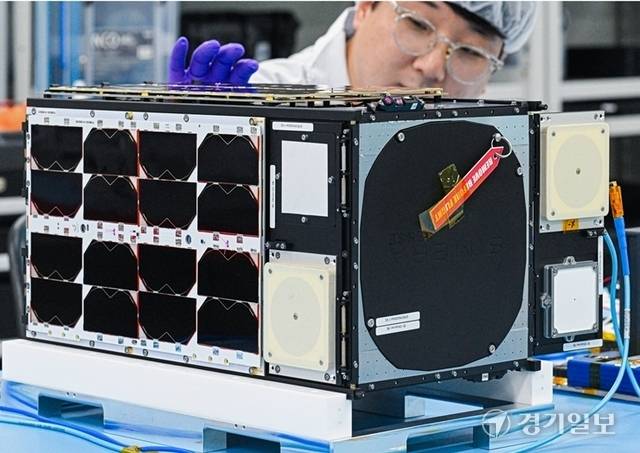Other news

What is Antenna Gain in Satellite Communications? (Explained simply)
Read more
Reflectarray Antennas for Small Satellites: From Concept to First Commercial Deployment
Read more
Let’s face it—space is busy, missions are complex, and satellites are doing more now than ever before. They’re observing the Earth, relaying internet, enabling science, navigating fleets… but behind every satellite, there’s a core reason it was launched: the payload.
And while the payload might be the heart of the mission, it needs a voice—a way to transmit its data, its value, its purpose. That’s where the payload antenna comes in.
In this article, we’ll break down:
Whether you’re a mission designer, systems engineer, or simply curious about how satellites “talk”, this deep dive into payload antennas will give you a clearer view of what really makes a space mission work.
Let’s get one thing straight: without its payload, a satellite is just a bus with nowhere to go.
In the space industry, we often talk about launch vehicles, platforms, and subsystems—but at the end of the day, the payload is the reason the satellite exists in the first place. It’s the business end of the mission, the “why” behind the “how”.
A payload is the set of instruments, sensors, or systems aboard a satellite that performs the core function the satellite was built for. Think of it as the purpose of the mission, packaged into high-tech equipment.
Some concrete examples:
Each satellite’s mission revolves around what the payload is designed to do:
Without a payload, a satellite isn’t much more than a very expensive piece of space hardware orbiting Earth with no story to tell.
In fact, payloads are often considered strategic assets. They can provide:
And because they often carry national, economic, or commercial interests, payloads are designed with extreme care—from RF compatibility and thermal performance to mass budgets and vibration resistance.
Let’s imagine you’re a mission designer. You’ve defined your goal: say, monitoring CO₂ emissions over major cities. Your payload might include:
That payload now drives everything else: satellite orientation, power supply, orbital altitude, data rate, and yes—what kind of antenna system you’ll need to make it all work.
This is why understanding the payload is step one in any mission architecture. Everything else is there to serve it.
Now that we’ve nailed down what a payload is, let’s zoom in on one of its key enablers: the payload antenna.
You can think of it like this:
A payload antenna is the dedicated link between the payload and its end users—whether that’s a ground station, another satellite, or a relay system. It’s the component that ensures that the precious data gathered in orbit doesn’t stay stuck in orbit.
Imagine a satellite imaging the Amazon rainforest. The onboard camera captures vast amounts of visual data daily—but without a reliable payload antenna to transmit those gigabytes down to Earth, none of that imagery is usable. The mission would be a silent one.
So in short: no payload antenna, no mission output.
A satellite typically carries several types of antennas, each serving a specific subsystem. It’s a bit like different communication channels in a cockpit.
Let’s break them down:
| Antenna Type | Function | Example Use |
| TT&C (Telemetry, Tracking & Command) | Enables ground control to talk to the satellite | “Are you OK up there?” / “Execute maneuver X” |
| GNSS (Navigation) | Provides precise positioning and timing | Receiving GPS or Galileo signals to calculate orbital parameters |
| Payload Antenna | Transmits or receives the core mission data | Downlinking images, relaying scientific measurements, enabling communications services |
Think of the TT&C antenna as the satellite’s phone line to its operators. The GNSS antenna is its GPS. But the payload antenna? That’s its voice to the world—the channel through which it fulfills its mission.
Payload antennas are designed with extremely specific requirements:
In some missions, the payload antenna also has to be deployable—folded during launch, then deployed in orbit like an origami structure. In others, it has to be embedded with minimal protrusion, such as in CubeSats where every centimeter counts.
Because they transmit high-frequency signals, payload antennas must comply with spectrum regulations, such as those defined by the ITU. This adds another layer of engineering constraints—and makes early collaboration between antenna designers and payload teams absolutely critical.
Designing a payload antenna is not just about electromagnetic performance—it’s about making the mission succeed in the real world. At Anywaves, we’ve had the privilege of contributing to a wide variety of space missions by delivering custom, flight-proven payload antennas tailored to exacting specifications.
Here are a few missions where our antennas are actively playing a key role.
Mission type: High-resolution Earth imaging
Orbit: Low Earth Orbit (LEO)
Payload antenna: X-band data downlink
The Observer satellite, developed by South Korean company Nara Space, was launched to capture Earth imagery and send it back to ground stations with high speed and clarity. For this mission, Anywaves supplied a dedicated X-band payload antenna.
Tailored for data-intensive imaging payloads, this antenna:
With Observer now operational, the antenna ensures that gigabytes of valuable Earth data are no longer locked in orbit—but accessible, actionable, and delivered on time.
Mission type: Arctic climate and weather observation
Payload antenna: L-band telemetry downlink
In collaboration with OHB Sweden, the Arctic Weather Satellite mission aims to gather frequent, detailed meteorological data over the Arctic and other poorly observed regions—vital for global weather models.
To support the real-time transmission of atmospheric measurements, Anywaves provided an L-band payload antenna featuring:
Positioned in a dawn-dusk orbit, this antenna ensures that key climate observations—especially over ice-covered and cloudy zones—are efficiently transmitted, enhancing weather forecasting accuracy worldwide.
Mission type: Auroral and ionospheric physics
Orbit: 600 km sun-synchronous
Payload antenna: X-band data downlink
Developed by Laboratoire de Physique et Chimie de l’Environnement et de l’Espace (LPC2E) in partnership with CNES, Pandore is one of two synchronized nanosatellites of the Synchrocube mission, launched to study the interaction between solar winds and Earth’s magnetic field.
Anywaves contributed a miniaturized X-band payload antenna supporting:
Pandore’s success marks a step forward in low-cost, high-impact space science—with a payload antenna at the core of its mission effectiveness.
Mission type: Asteroid impact monitoring (post-DART)
Destination: Didymos/Dimorphos system (deep space)
Payload antenna: S-band data relay
As part of ESA’s Hera mission, which will assess the results of NASA’s DART kinetic impactor test, Anywaves developed a deep-space qualified S-band antenna supporting Hera’s scientific payload suite.
This antenna is designed to:
With launch planned aboard Ariane 6, Hera represents a new frontier in planetary defense—and the antenna ensures that what the satellite sees gets back to Earth, safely and without loss.
These examples illustrate a core truth: no two missions are the same, and therefore, no two payload antennas should be.
From Earth imaging to signal intelligence and IoT coverage, payload antennas must be as mission-specific as the instruments they serve. That’s why at Anywaves, we approach each antenna as a strategic, tailored solution—not a one-size-fits-all component.
The payload might be the satellite’s brain, but without its antenna, it has no voice.
In every space mission—whether it’s imaging wildfires, relaying maritime data, or analyzing the radio spectrum—the payload antenna is the final, critical link between the satellite and the people who depend on its data.
From frequency selection to radiation pattern design, from mechanical constraints to in-orbit performance, a payload antenna must be engineered with the same care as the payload itself. Because ultimately, its job is to deliver the mission—literally and figuratively.
At Anywaves, we specialize in doing just that: designing and qualifying high-performance payload antennas that meet the exacting demands of modern space missions.
So if you’re designing a satellite and wondering:
“How do I make sure my payload can actually communicate?”
Start with the antenna.
We’ll help you make it heard.



If you have any question, we would be happy to help you out.